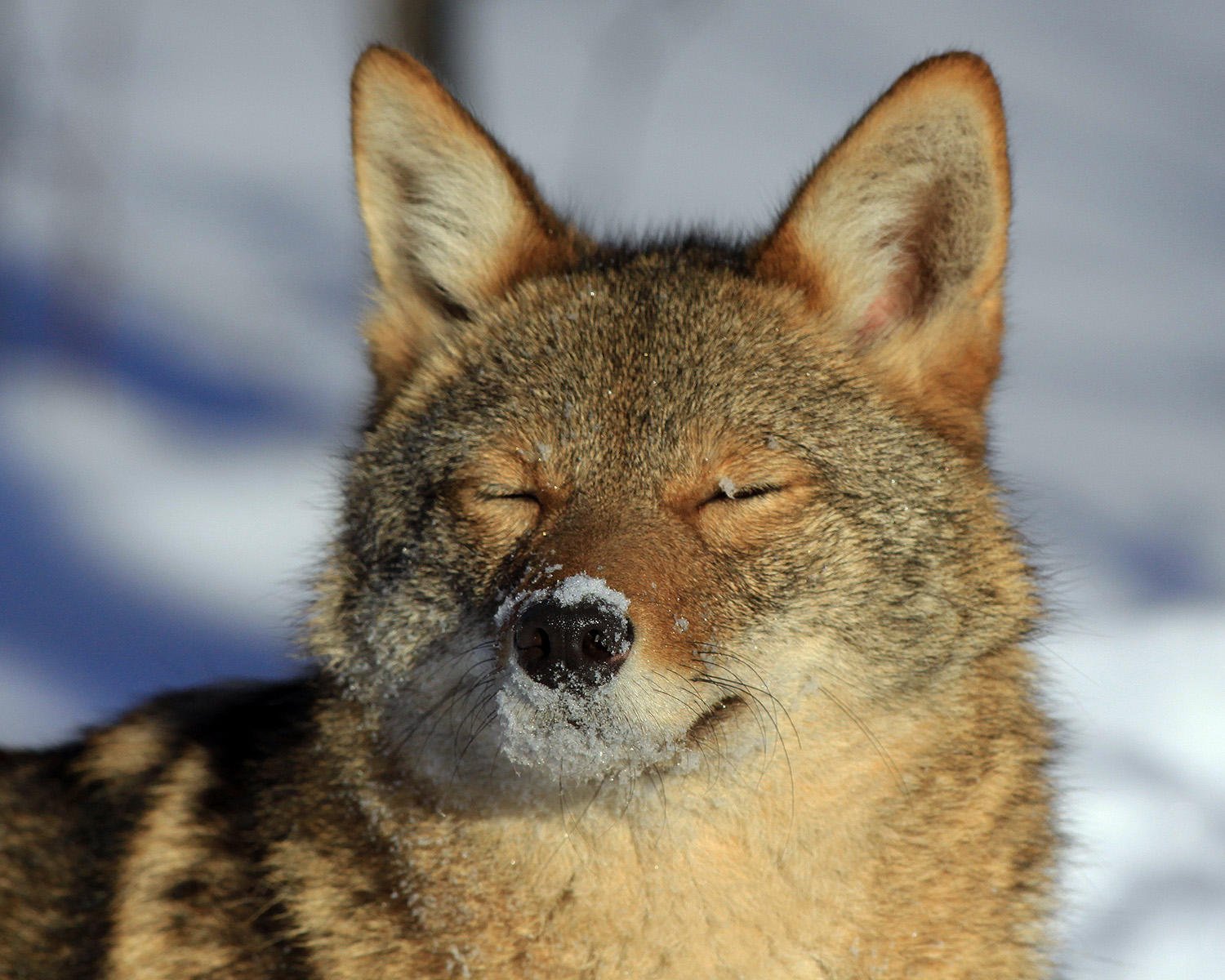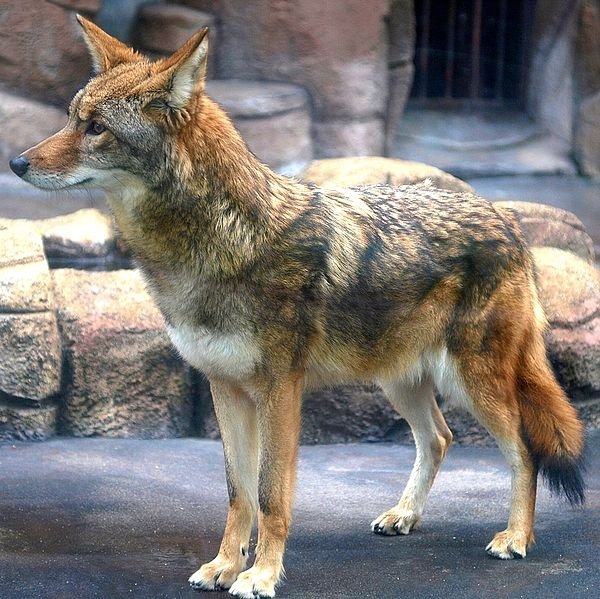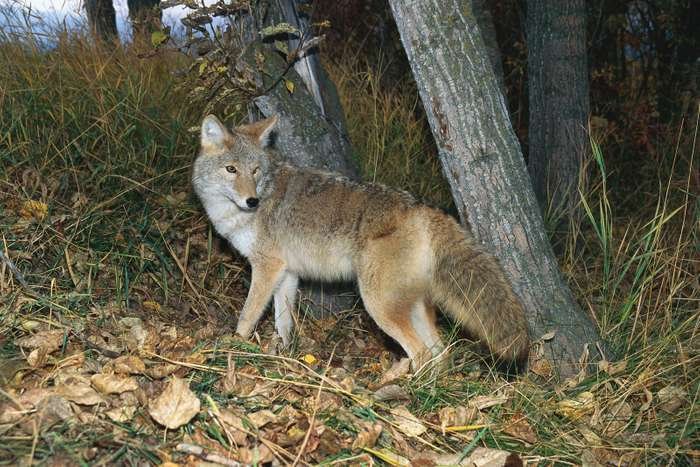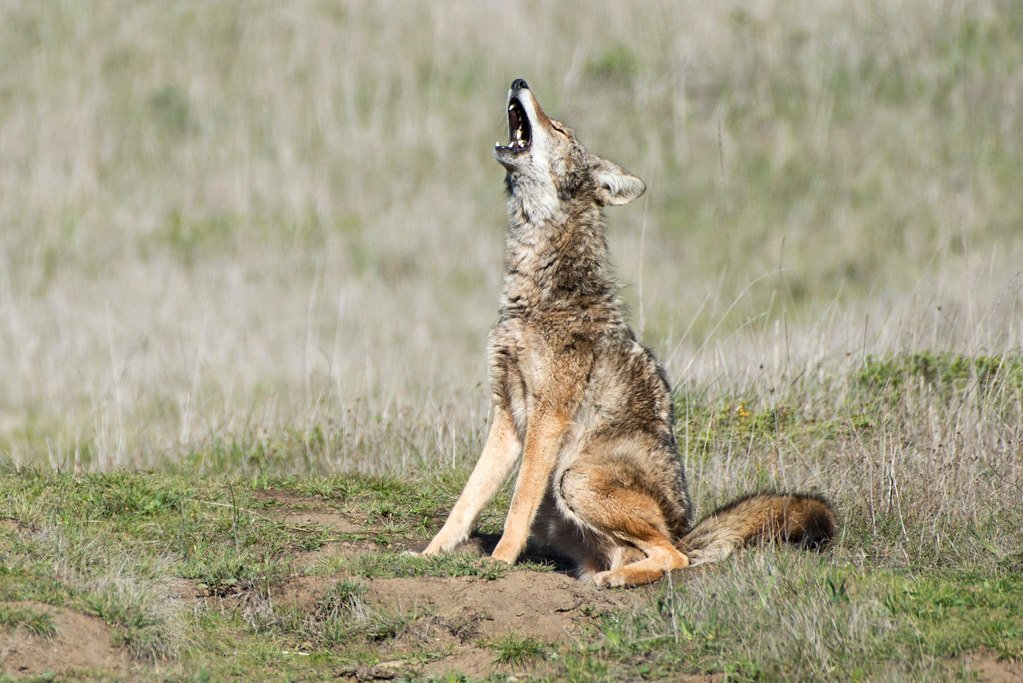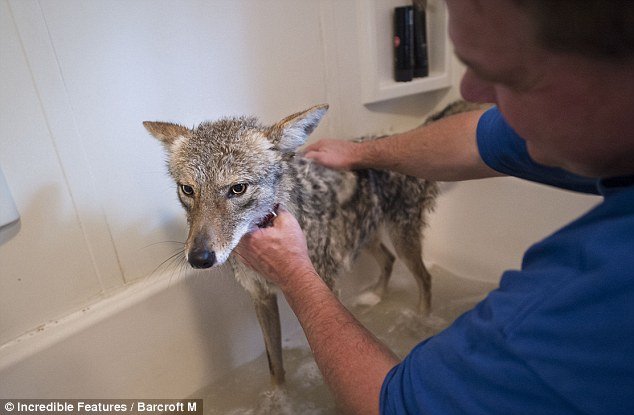Siberian Husky and Coyote Similarities. The Siberian husky, which developed as a sled dog breed in northeastern Asia and came to Alaska and northern Canada in the same role, is one of the more feral-looking strains of domestic dog, seemingly not far removed from their wild brethren. One of those relatives is the slightly smaller coyote of North and Central America, a supremely adaptable canine that has flourished alongside human development. The two are quite similar looking in a general sense, though important physical differences easily distinguish them.
Head
In a rough sense, the head of the husky and the head of the coyote much resemble one another. They both have erect, pricked ears, though those of the coyote are larger in proportion to their head than the dog’s. Both have prominent long muzzles, but the husky’s is somewhat broader and more round-edged than the sharp, narrow snout of the coyote.
General Shape
Both the Siberian husky and the coyote embody the classic form of the archetypal canine: lean and long-legged. Those slender, muscular legs that power the husky’s relentless energy in a race or the coyote’s dogged pursuit of a jackrabbit or elk calf are strikingly different from the heavy, muscular ones of big cats or the squashed legs of weasels. Dogs are cursorial predators: They chase down prey, capitalizing on their excellent endurance. Thus they are strong but stringy, their paws designed for slapping the earth rather than grappling with prey, like a cat’s. Huskies typically have a fuller chest than a coyote and are generally stockier.
Tail
Both coyotes and Siberian huskies have thick, bushy tails. One difference lies in the distinctive curl most husky tails exhibit, often so tightly contoured that they wrap over the dog’s hindquarters. Coyotes tend to have straighter tails, sometimes held rigidly behind them but more often angled downward. That angle of the coyote’s tail, incidentally, is a diagnostic difference from the gray wolf, the ancestor of the Siberian husky: wolves usually hold their tails straight behind or even toted upwards when running, while coyote’s usually have them down.
Howl
Coyotes and huskies both howl, which associate them with the wolf’s iconic song. A husky might be prompted to howl by a fire engine’s siren; coyotes howl to keep in touch with one another, to display dominance in a particular territory, or, as with a dog, simply to convey excitement or other emotions. The dog’s howl is often more full-throated and wolfish than the coyote’s, which generally manifests more as a wild, reeling amalgam of yapping and high-pitched barking.
Sociability
Siberian huskies developed as sled dogs, which by their nature act as a team to pull a load long distances. Thus they are supremely sociable, though, as they are hierarchical, this can involve intense aggression. Coyotes, too, are highly social, although in certain regions they may be relatively solitary as adults. They often form packs that are essentially extended family groups, centered around a mated alpha pair.
